Liliia Palatnik
Year of birth: 1995.
Where do you live: Rome.
Your education: Moscow State Institute of Fine Arts in the name of V. Surikov;
The Institute of Practical Psychology in the Social Sphere ipps.ru;
Accademia di Belle Arti di Roma;
Describe your art in three words: colorful, candid, expressive.
Your discipline: painter, teacher, art therapist.
Instagram
Can you tell us about your journey as an artist? What inspired you to pursue this path?
It all starts with my amazing family. In a sleeping district of Moscow with no bright colors outside the window our apartment was full of art, music, cinema, books and creativity. My parents worked in a theater as actors, but also my mother was a yoga teacher and my father staged plays and wrote books. I also spent a lot of time with my grandmother, who would befriend interesting people of all professions and then casually get them to tutor her four grandchildren. We would study languages and arts at home, combining the lessons with tea time and conversation. We had albums of all kinds of artists, catalogues of museums at home and they were not just gathering dust on the shelves, she read them with us, asked us about our favorite pieces from them. I can say that by the age of six I already had quite a fine taste in art because of such education. I loved looking at pictures in albums and in books and my perception of the world was and still is mostly visual. The funny thing though I remember vividly that as a child I would always say “never an artist, I will never be an artist”, I wanted to be a spy, a ballerina, an actress but never an artist. And for the whole period of middle school the artistic thing stayed dormant until my mom found an art studio of real working artists in our district and suggested that I try going there as they were taking students, they took me as a real family and creativity became interesting again. Like that by the end of school I decided to go for art history studies. That was when all became clear, studying art history was too distant because I already knew the language of art, it felt like I could actually talk to artists of the past if I would only use their language – color, line, composition – instead of just reading stories about them. I decided to pursue the art path.
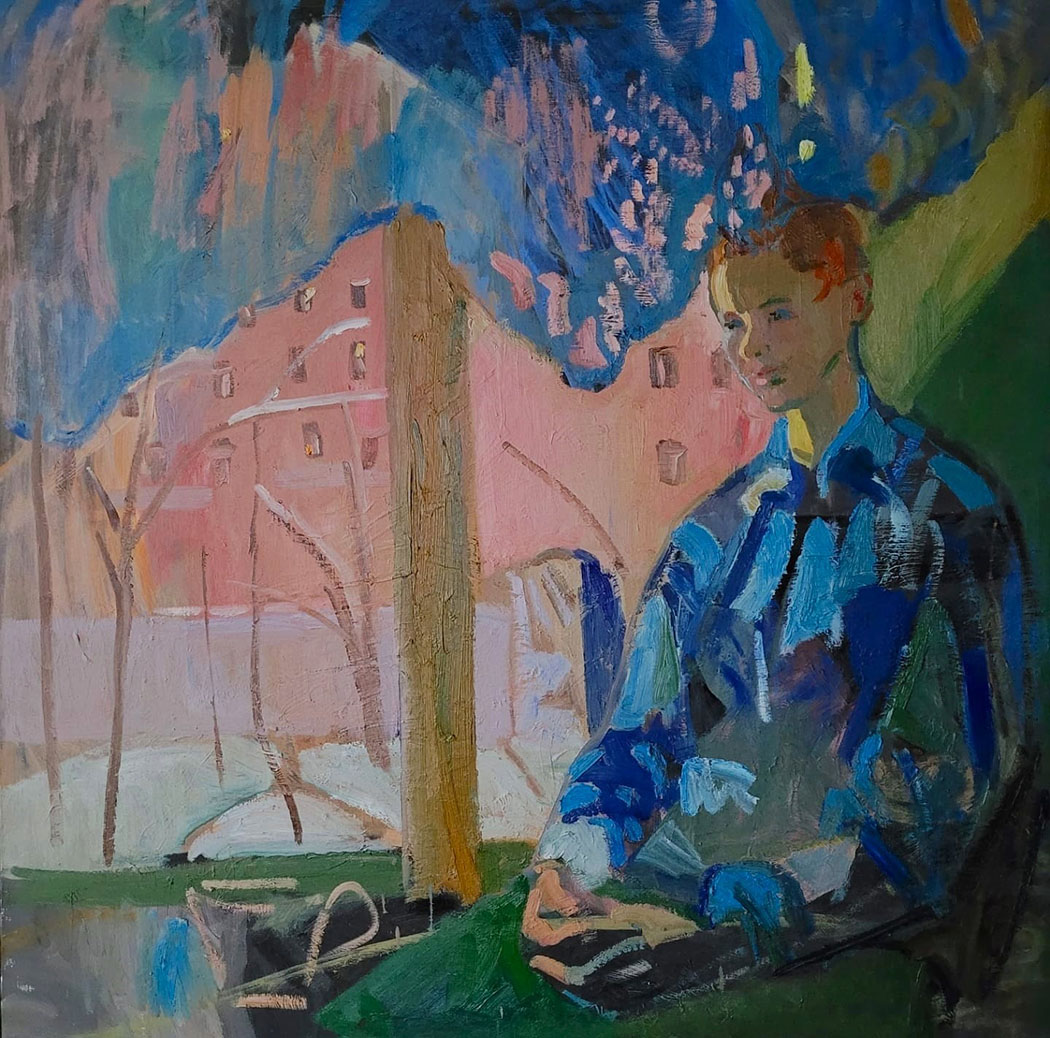 Liliia Palatnik | A winter morning | 2022
Liliia Palatnik | A winter morning | 2022
How has your education at Moscow State Academic-Artistic Institute and the Accademia di Belle Arti di Roma influenced your artistic style?
These two institutions are so different one from another that they seem like two different lives. I remember how I set up my mind on entering Moscow State Academic-Artistic Institute. One normally has to go to an artistic college before entering, and I was a self-built artist, so I felt really insecure. I went to their preparatory course first. And it was there that I learned painting. I genuinely believe that I learned how to paint in one day. Our painting teacher decided to give us a master class on oil painting. She came from vanguard school, she only taught the preparatory courses. She took a huge canvas, huge brushes and just started throwing colors on the canvas and kind of dancing from the palette to the easel. That was a revelation for me, she was so bald and had no fear. That master class had inspired me for a whole year. Unfortunately I didn’t get through entering exam that year and had to go to the preparatory course again. I had a goal – to enter, but I also had lost my confidence and had a lot of fear. I worked hard and I did enter the second time. But the insecurity stayed with me. I felt like I didn’t belong. There were professors who didn’t allow the freedom of vanguard art, there was rigid academic system built on rules and hierarchy. The students who knew their own value did great things, I however believed to be inferior to everyone, I wanted to do everything right and that is not a good attitude when it comes to art. For me studying there was a struggle – I wanted to do things the way I felt but I was afraid to stand up to the professors. I could stand up to them in conversation but when it came to my work all the academic rules would start suffocating me from inside. So when I finally graduated I was seeking new inspiration, I wanted to get rid of all the unnecessary rules and find myself, revive the love that I once had for art. By that time I already had been teaching various groups and it gave me a lot to think about. I noticed that many grown up people who had status, achievements when came to art classes became all shy and frightened and insecure from the very start and I recognized myself in those feelings. I decided to set aside many rules and teach giving space to people’s feelings. And there were a lot of feelings and memories and conversations in my classes. All that got me thinking about the therapeutical power of art. I took a short introductory course in art-therapy and it was exactly what I had needed. It gave me a new perspective, a new approach to art, art became not the destination but the way. I entered the masters program in art therapy in the roman Academy of Fine Arts and so far it was the best decision of my life. At the academy there is a lot of group work, we study collective art, how to involve people in art, how to communicate better, how to consider other people’s feelings. So the first thing we do is we get rid of artistic snobbism, of prejudice on what is right and wrong in art. We share experience and we learn from each other, we try new techniques, we try things that might seem silly, like body painting. So I would say that my first education gave me the basic rules and technique and my second education is giving me the freedom and wideness of perception.
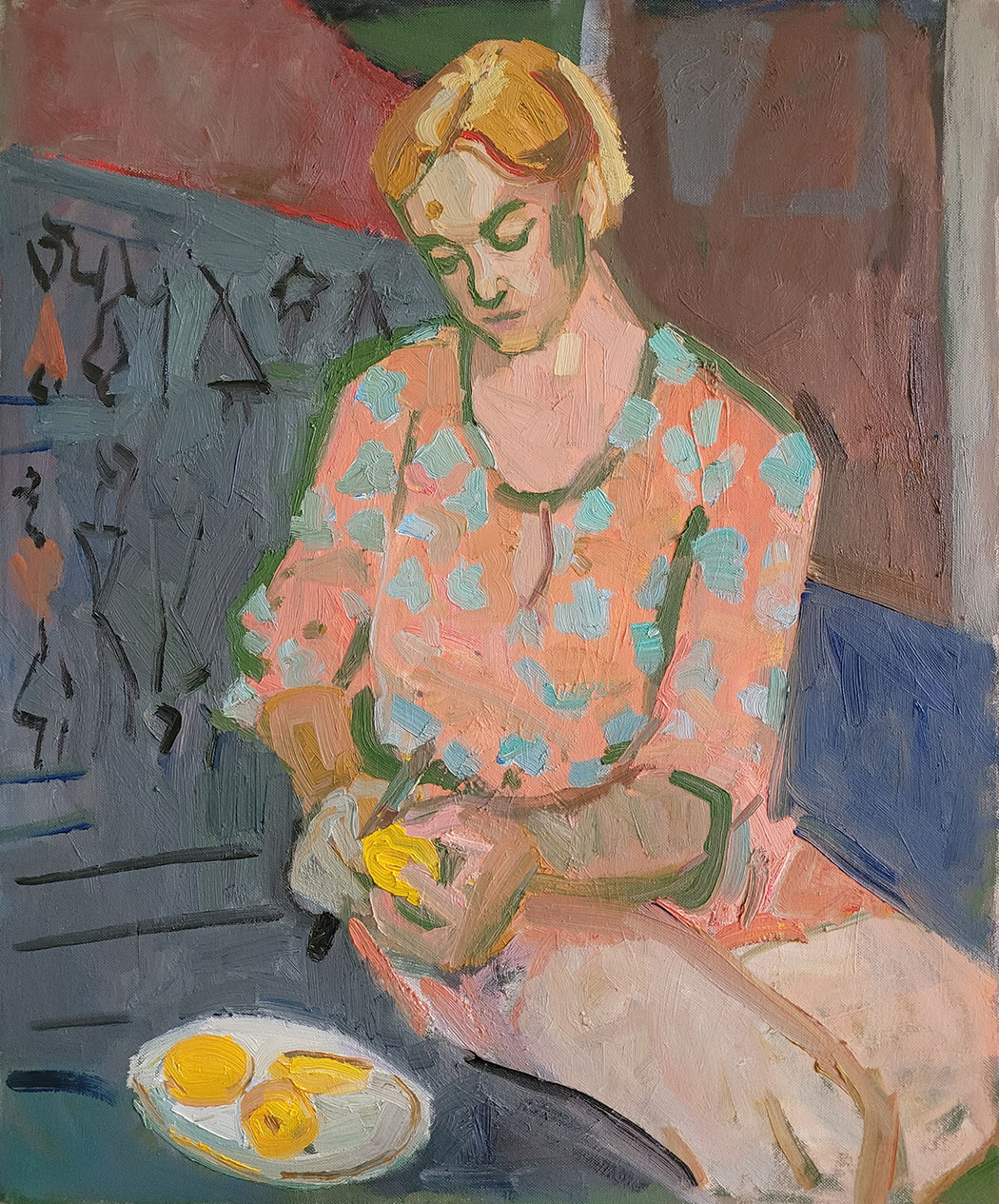 Liliia Palatnik | Mom with apricots | 2023
Liliia Palatnik | Mom with apricots | 2023
You have a background in art therapy. How do you incorporate art therapy principles into your work?
First of all, I learned how to use art as a help mechanism. I notice all the little soul movements that emerge in me while I create art and I give them space and understand myself better. It also helps in teaching. I can understand what people I teach feel in the art process. I stopped criticizing myself so bad, I know that a mistake communicates something and also can lead to unexpected results, and in art as well as in art therapy unexpected is good. I also started using a lot of new techniques- collage, print, markers, embroidery- all these techniques have a therapeutical sense in them but also give expressivity to an artwork.
Your portraits seem to capture the essence of the subjects deeply. What is your process for creating a portrait?
I love painting live model. Because this way I have more fun. The main thing in a portrait for me is the conversation I have with the model. It is actually a very intimate atmosphere, the two of us looking at each other, the smell of oil paints. The person posing usually senses my whole attention on him or her and to not make them feel uncomfortable I start asking them questions about themselves, I also start explaining my art process, and as my art is a reflection of me, I inevitably start sharing some feelings and the person in front of me also opens up. It is beautiful. Much more beautiful than the portraits that come out in the end. Of course, I paint from photos as well but it is more difficult, it requires abstract thinking, as the photo never sees what I see in person, so I have to use the photo only as a reference and try to imagine what I actually would like to say.
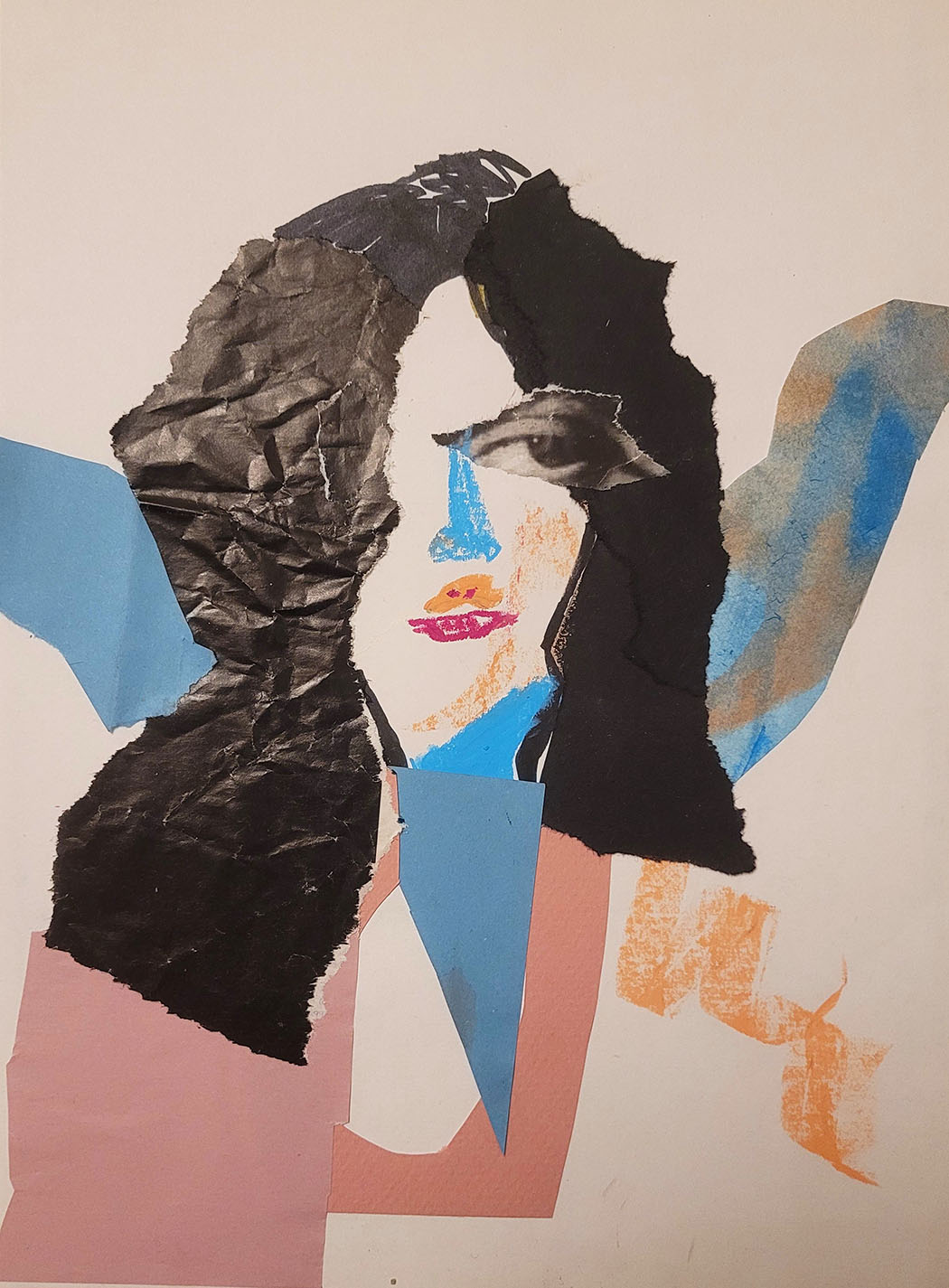 Liliia Palatnik | Sofia in a fairy costume | 2023
Liliia Palatnik | Sofia in a fairy costume | 2023
How do you balance your time between creating art, conducting workshops, and collaborating with various organizations?
Balancing time is the hardest thing. It feels like in Alice through the looking glass- you have to run really fast just to stay where you are. Right now I am balancing studies, motherhood, work and my own art and projects. I want to do so many things, like I want to make an exhibition dedicated to motherhood, I am currently working on a collective anti violence art project, I want to improve my painting but also I feel like I have to study more to work in all the fields that interest me, I recently started studying performance and I would really like to try myself in it. But there is simply not enough time for it all. And sometimes I feel overwhelmed even before starting the day. The important thing I learned though is to never neglect my mental health. If I feel tired, I must rest, if I feel overwhelmed, I must take a brake even from thinking. And the funny thing is, I noticed that when I slow down, time kind of slows down too. It is hard to believe unless you try. The Italians know this secret, so I am lucky to learn from them. Oh, and of course I wouldn’t have done anything with my life without people who are around me, I am really lucky to have not only creative but very supportive family, my parents my husband who helps me with everything, my friends and my colleagues, I feel like on the social scale I have won the lottery. But I also feel that social skills and I mean not small talk but making friends, asking for help are underestimated in modern society. I literally don’t believe that one can achieve any big goal without help and support of others.
How do your personal experiences and background influence your artwork?
I would say that all my experience had led me to who I am now. My knowledge of art broadens my horizons, gives me ideas of what I could try and also gives me the feeling of not being alone ever, because I can always find an artist, an artwork that would support me in a certain moment and that I have had from my childhood. My parents used to work as actors in a theater when I was a child and I learned a lot about space, composition, rhythm, use of one’s body from theater performances that I watched with them. It helps me a lot in teaching, in organizing groups of people and in creating my painting compositions as well. I must admit that at the Moscow Institute of Fine Arts I actually learned how to draw and paint easily, I notice now that it does not take me too much time to almost finish an artwork (then of course the last details, the finishing process can be endless), and art therapy gives me a lot of personal support and new opportunities. And one of the best influences on my art has my three year old daughter. She opened the world to me, she taught me how to play, how to try new things, how to be courageous.
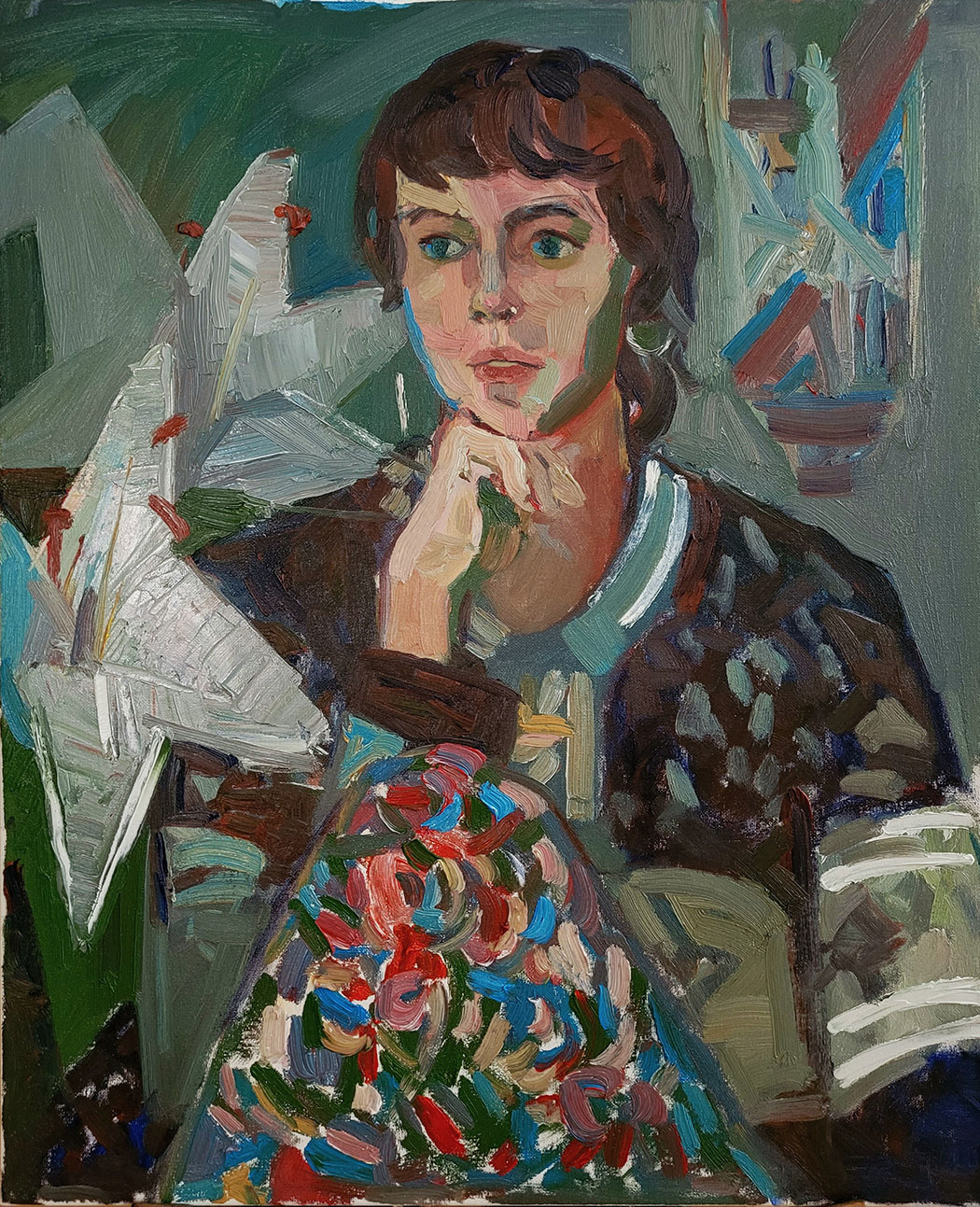 Liliia Palatnik | Sofie with lillies | 2023
Liliia Palatnik | Sofie with lillies | 2023
What role does the city of Rome play in your creative process?
Rome is my dream, my love. Not only is it full of antique and renaissance and modern art, to me Rome is art itself. When I came here as a child I was dazzled by the blue sky, how blue it was, you see I came from a grey country where winter lasts at least for five months. And as a ten year old I just loved this pure blue sky that seems like blue paper with a collage of green trees and red houses on it. And on that blue sky I saw the migration of birds that seemed absolutely cosmic. It was artistic perception – perception of the color and of the form. And then I came here in the year 2019, when I was living a personal and artistic crisis, and this city brought me back to life, that year I had decided that I was going to live in this city no matter what. Again, it was like therapy- because Rome awakened my senses and it still does. I drink the colors with my eyes- the red of the house paint, the green of the trees. But at the same time the brightness of the sun demolishes, eliminates the colors and the objects making one think about what is beyond the material world, sun makes everything sacred. Rome shows you the complexity of life. The flow of the Tiber river, the noises of the traffic and conversations and the bells and the birds, the smells of fruit and pines and trash and food. And yet you always notice the time- the gray behind the cheerful red paint, how the platans lose their skin, the ruins. I hope to learn from Rome to make my art more complex and more alive.
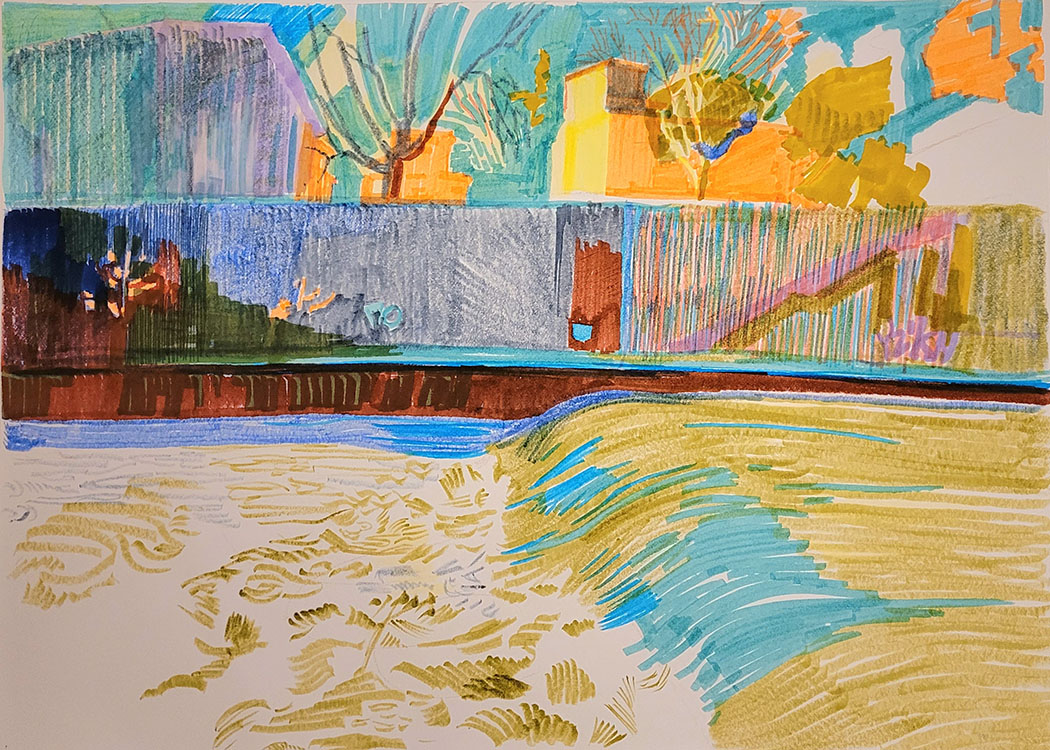 Liliia Palatnik | Cascata | 2024
Liliia Palatnik | Cascata | 2024

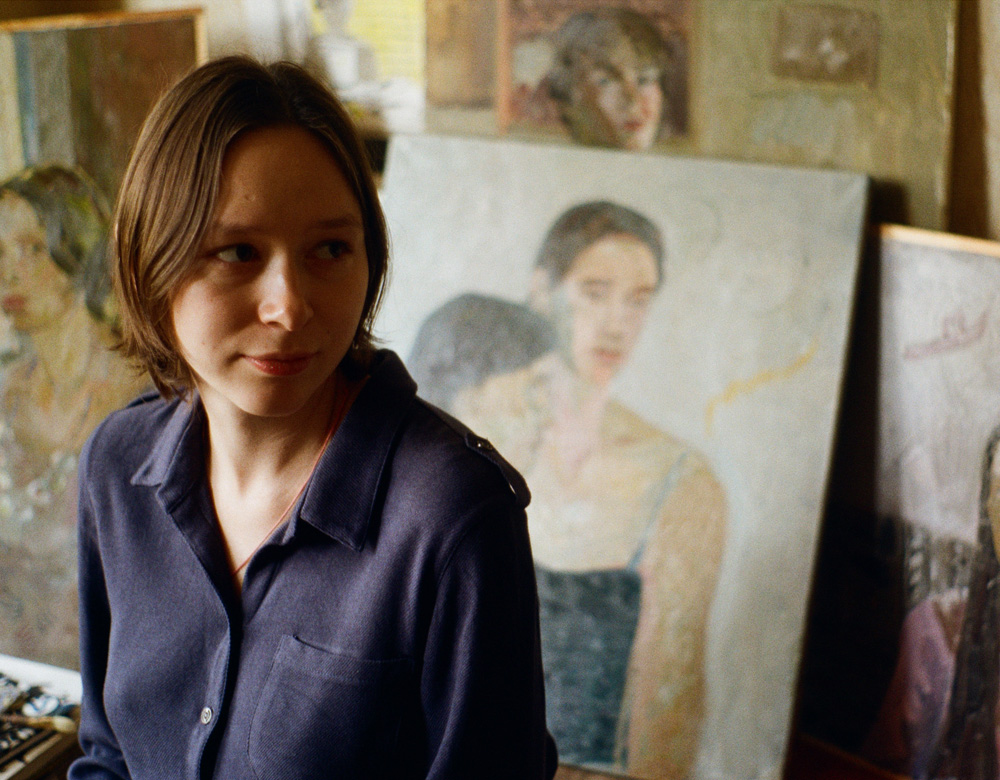
Leave a Reply
You must be logged in to post a comment.